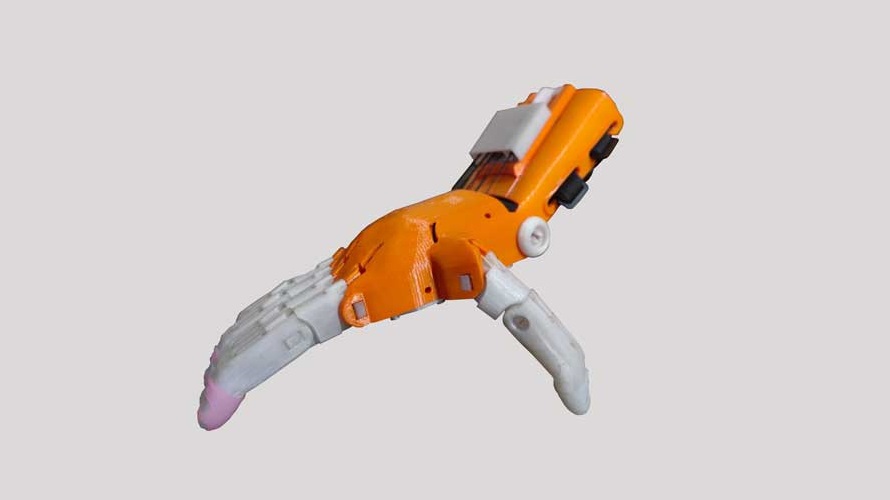3D printing is a relatively new but promising technology available to professional prosthetists and amateurs alike. Free, editable designs are even available online. So anyone with access to a 3D printer and a DIY mentality can create a bespoke prosthesis at a low price point.
A prosthetic hand can cost thousands of dollars; however, a 3D-printed prosthesis could be made for as little as $50.
3D printing materials cannot yet replace the long-term durability of traditionally-made prostheses. However, this will soon change. In the meantime, technology is making cost-effective prosthetics a reality and encouraging creative people from all over the world to participate in their designs.
The Origin of 3D Printed Prosthetics
The creation of the 3D printed prosthetic movement was truly serendipitous.
Ivan Owen is an artist who designs props and gadgets. He created a mechanical hand for a steampunk convention and posted videos of it online. A carpenter in South Africa who had lost four fingers in an accident saw these videos. He collaborated with Owen on creating a prosthetic hand for himself.
A mother then by chance saw their project and wanted a version of the prosthetic hand for her son Liam. Owen realized that 3D printing would allow the family to create new prostheses on the cheap as Liam grew out of old ones.

Liam’s was the first 3D printed prosthetic hand. Owen decided to put the design files up for free online so others could expand and improve on the designs. This led to e-NABLE, an online community where anyone can help collaborate on 3D printed prosthesis designs and get help printing and assembling their own.
Why 3D Printed Prostheses Are Great For Children
3D printed prostheses are a cost-effective way to keep up with a child as they grow, or damage their current one in the act of being a kid.
Even more importantly, children don’t necessarily want a realistic prosthesis: They want one that suits their personality. In this viral video from 2015, actor Robert Downey Jr. shows up to present a child named Albert with his own Iron Man arm prosthesis:
Personalized prosthetic arms allow children to express themselves. Just like wearing any other accessory. So they can take pride in themselves and their prosthesis.
Current Uses of 3D Printing In The Field of Prosthetics
Currently, prosthetists use 3D Printing to create prosthetic hands, arms, feet, and legs. Different companies and volunteer community designers are refining designs and producing new ones.
Prosthetic Arms and Hands
The e-NABLE community focuses on mechanical prostheses that are simple to print and assemble by anyone, but they stick to Wrist-Actuated and Elbow-Actuated designs. They even provide simple visual guides of different amputations. This makes it easy to pick a design that works with the wearer.
Source: www.amputee-coalition.or



Write A Comment